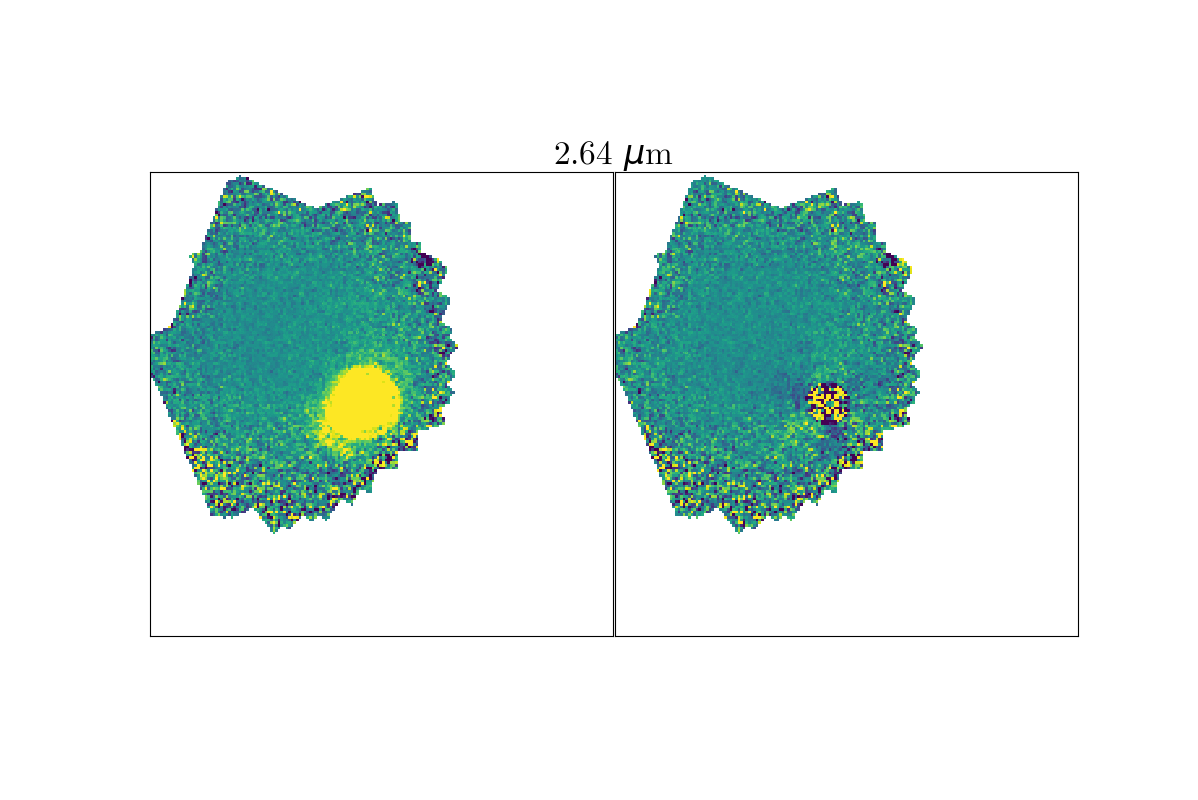How do planets form and what do young planets look like? You'll see below that I have worked to bring the power of high-spatial resolution spectroscopy to bear on these questions. I have also worked on projects to investigate the super-massive black hole at the center of our galaxy. I am currently working with the Large Binocular Telescope Interferometer team, reducing data from the LEECH survey ---an L-band search for mature planets around nearby stars. I also lead the ALES L-band IFU implentation and commissoining as project scientist. ALES will facilitate high-contrast spectroscopy of planets near the peak of their SEDs.
ADS listing of my work
|
Imaging Interferometry with LBTI |
I'm leading the effort to push LBTI phase-referenced imaging
interferometry to fainter magnitudes.
|

Co-phased NRM with LBTI |
Co-phased NRM will yield science results on spatial scales even
smaller than the binocular diffraction limit!
|
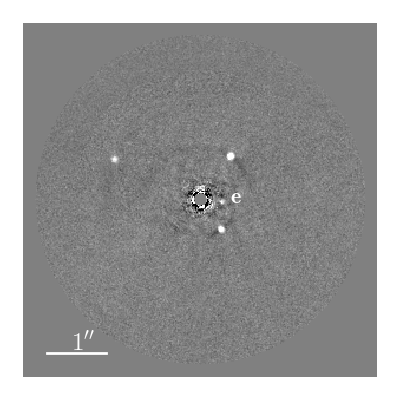
Direct Imaging with LBTI |
I led the LEECH direct imaging survey with LBTI. The survey was
conducted at 3.8 microns and delivered the best sensitivity to
cold-start gas-giant planets on solar system scales. The main
result of the paper is that cold-start planets could be quite
common around FGK stars. ADS link |
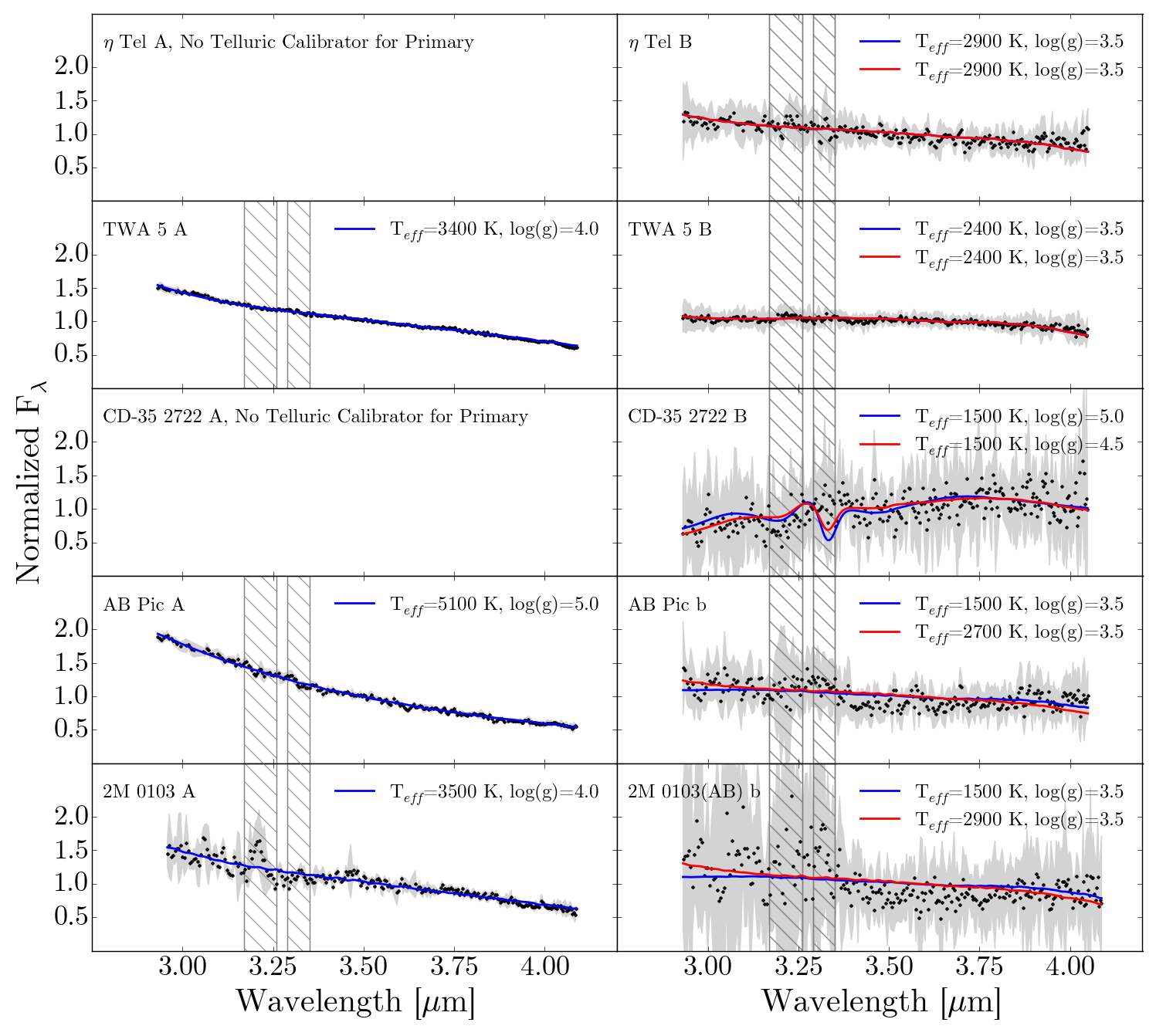
High-contrast L-band spectroscopy of substellar companions |
I worked with the MagAO team to establish the
low spectral resolution L-band spectroscopy mode of the Clio2
instrument. This mode provides R~50 to 300 spectra at high-spatial
resolution. ADS link |
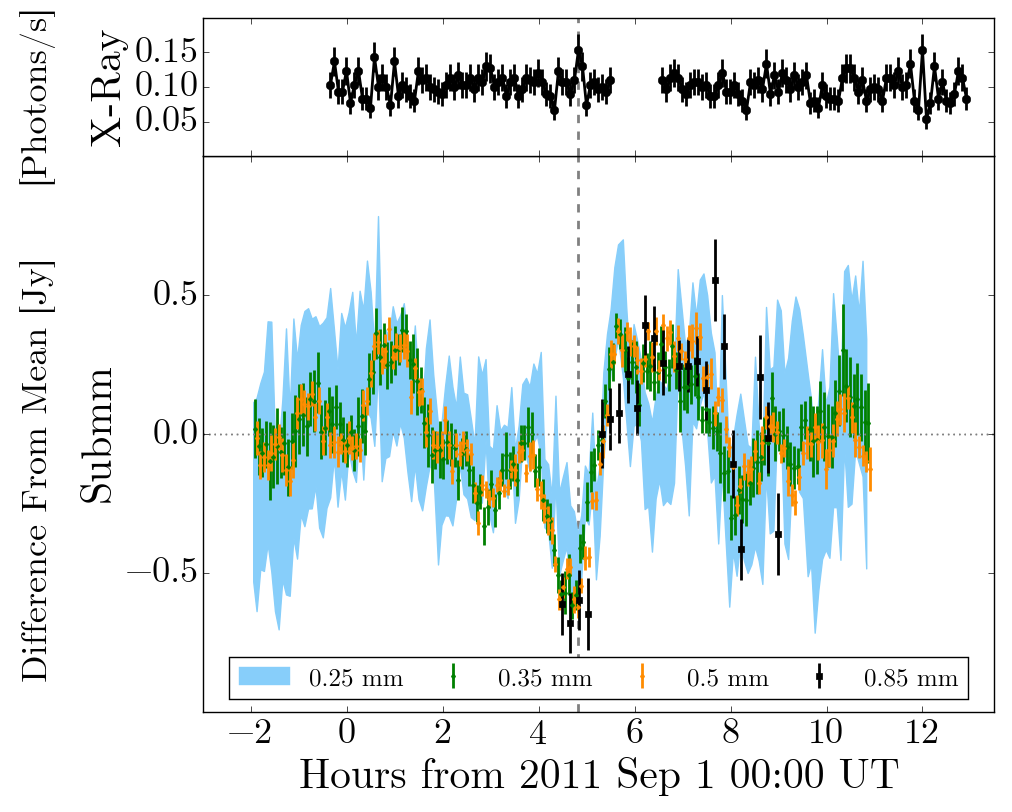
Variable emission from Sgr A* at sub millimeter wavelengths with Herschel SPIRE |
I corrected slow pointing drifts of the Herschel Space Observatory
to obtain a 25.5 hour light curve of Sgr A* at
submillimeter wavelengths, providing the first constraint on
the SED of Sgr A* at 0.25 mm.
ADS link |

VHS 1256 -1257 b |
I discovered that the central source in the VHS 1256-1257
system is an equal magnitude binary. This may indicate
a further distance to the system and could mean that the
planetary mass companion is actually more luminous and more
massive.
ADS link |

Variable accretion rates in the UY Aur pre-main sequence binary system |
I worked with the instrument team to commission the
high-resolution echelle spectroscopy mode of ARIES behind the
MMT adaptive optics system. We reported results on the UY Aur
binary system which includes two classical T Tauri stars in the
late stages of their formation.
ADS link |
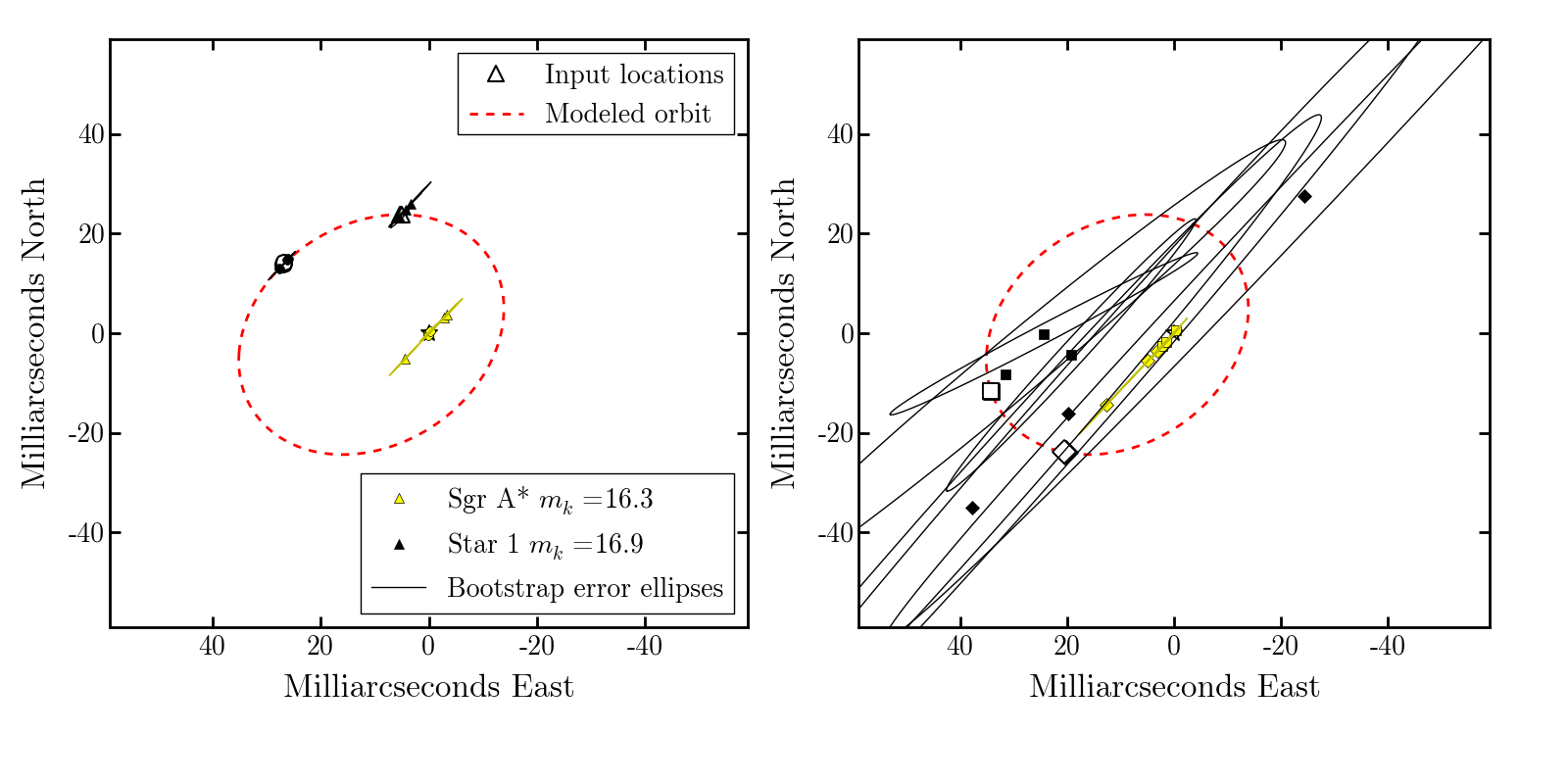
Interferometric observations of stars orbiting the black hole at the galactic center. |
I simulated the performance of the Keck Interferometer ASTRA instrument and the VLT interferometer GRAVITY instrument in making observations of stars orbiting the galactic center. ADS link |
Updated 2016 June 20
